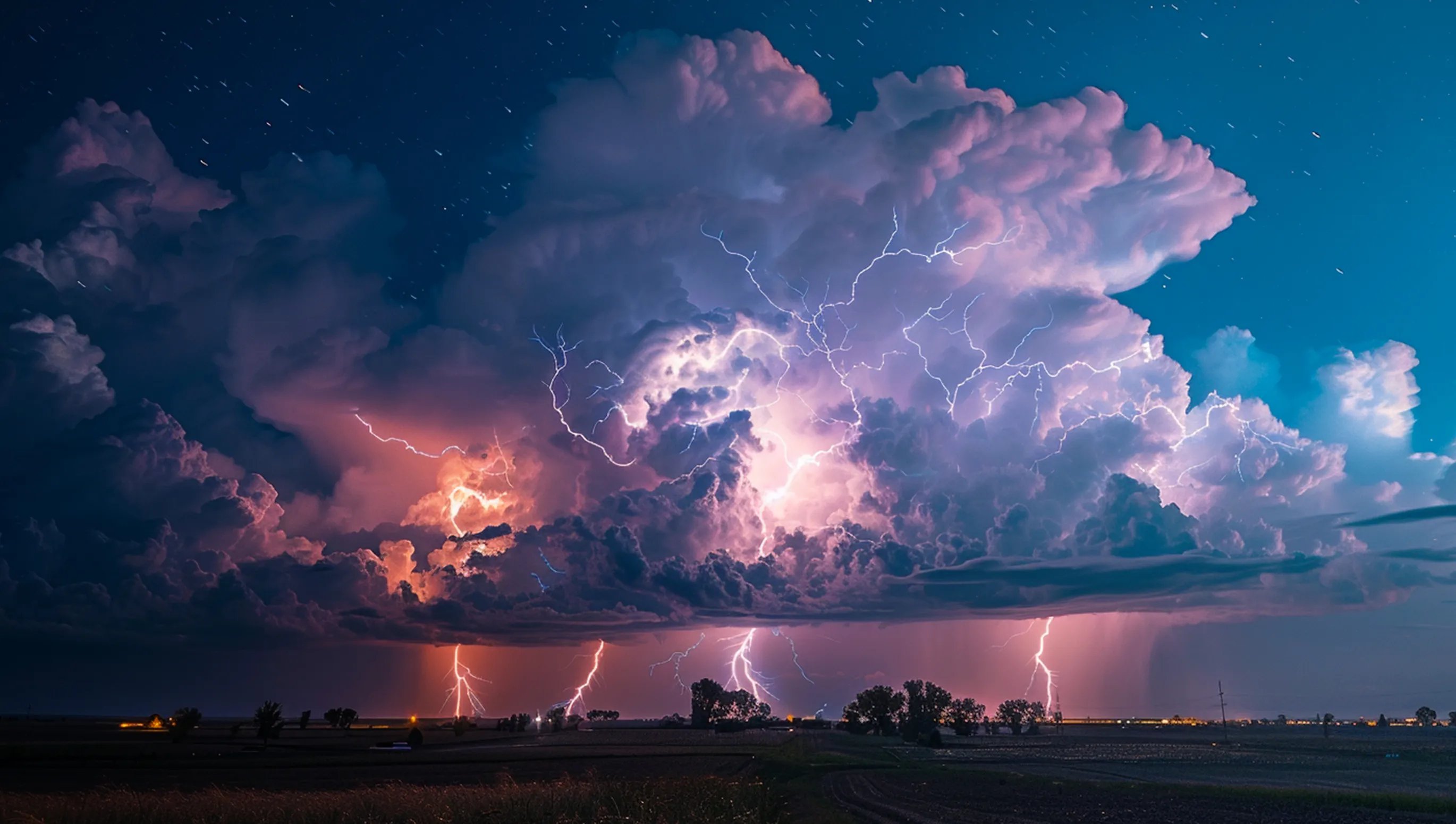Lightning is one of the most impressive and powerful natural phenomena. An average lightning bolt contains about 5 billion joules (5 GJ) of energy, which is equivalent to the energy released by the explosion of 1 ton of TNT. This natural phenomenon impresses with its beauty and fascinates with its power. Here are some interesting facts about lightning.

Lightning is a common phenomenon on our planet. Scientists estimate that on Earth:
- Per year: about 3 billion lightning strikes
- Per day: approximately 8 million strikes
- Per second: about 100 lightning strikes
The characteristics of lightning vary greatly. The average duration of a lightning bolt is about 30 microseconds, but it can range from a few microseconds to several seconds. The current in a lightning bolt can range from 10,000 to 200,000 amperes, and the voltage ranges between 100 million and 1 billion volts. The longest lightning bolt ever recorded was in Brazil in 2018, spanning a distance of 709 kilometers.
The Power of Lightning in Numbers
To better illustrate the energy in an average lightning bolt, let's compare it to the energy consumption of 20 common electrical devices:
- Refrigerator: 3.8 years of operation
- Television (LED): 5.7 years of operation
- Washing machine: 1.1 years of operation
- Microwave: 7 months of operation
- Air conditioner: 3.5 months of operation
- Electric kettle: 3.5 months of operation
- Computer (Desktop): 2.9 years of operation
- Laptop: 11.4 years of operation
- Smartphone (Charging): 114 years of operation
- Vacuum cleaner: 7 months of operation
- Electric stove: 3.5 months of operation
- Dishwasher: 4 months of operation
- Clothes iron: 7 months of operation
- Hair dryer: 4 months of operation
- Electric toothbrush: 570 years of operation
- Table lamp (LED): 57 years of operation
- Coffee maker: 7 months of operation
- Game console: 3.8 years of operation
- WiFi router: 57 years of operation
- Electric water heater: 1.75 months of operation
These numbers clearly show how immense the energy stored in a lightning bolt is.
10 Interesting Facts about Lightning and People
- Roy Sullivan, an American park ranger, survived seven lightning strikes in 35 years, making him the record holder for lightning strike survival.
- In 1963, a lightning bolt struck a Pan American Boeing 707 flying over Maryland. The lightning ignited fuel vapors in the tank, leading to an explosion and the crash of the aircraft. This incident became a catalyst for the development of new lightning protection standards for airplanes.
- In 2019, a lightning strike hit a group of tourists on the summit of Mount Giewont in Poland, resulting in 4 deaths and over 100 injuries.
- Lightning strikes can leave unique patterns on the skin of victims known as "Lichtenberg figures."
- Lightning strikes can create glassy tubes in sand known as Fulgurites. These natural formations can grow several meters long and are formed by the immediate melting of sand upon lightning impact.
- In 2016, a lightning strike in Norway killed an entire herd of 323 reindeer, becoming the largest lightning-related mass animal death.
- There is the phenomenon of "secondary strike," where a person receives a shock from an object hit by lightning, even if they are up to 328 feet away.
- The chance of being struck by lightning in the USA over a lifetime is about 1 in 15,300, according to the National Weather Service data. This risk varies depending on geographic location and lifestyle.
- Approximately 90% of people struck by lightning survive. However, many survivors suffer from long-term health issues, including neurological disorders, memory problems, chronic pain, and post-traumatic stress disorder.
- The Empire State Building in New York is struck by lightning an average of 23 times per year. The building was specifically designed as a lightning rod to protect surrounding buildings and people from lightning strikes.
How Lightning Forms
Lightning is caused by complex processes in the atmosphere during a thunderstorm. This process can be simplified as follows:
- Electric charges separate in thunderclouds. The upper part of the cloud becomes positively charged, while the lower part becomes negatively charged.
- When the potential difference between different parts of the cloud or between the cloud and the ground becomes large enough, an electrical discharge through the air occurs.
- Initially, a faintly glowing channel (step leader) forms, paving the way for the main discharge.
- A strong electrical discharge flows through this channel, which we see as a bright lightning bolt.
- The air in the lightning channel heated to extreme temperatures expands rapidly, creating a shock wave that we hear as thunder.
Lightning is a spectacular sight and a powerful natural phenomenon that plays an important role in the atmospheric processes of our planet. Studying lightning helps us better understand the physics of the atmosphere and climatic processes and develop more effective methods to protect against this dangerous yet fascinating natural phenomenon.

